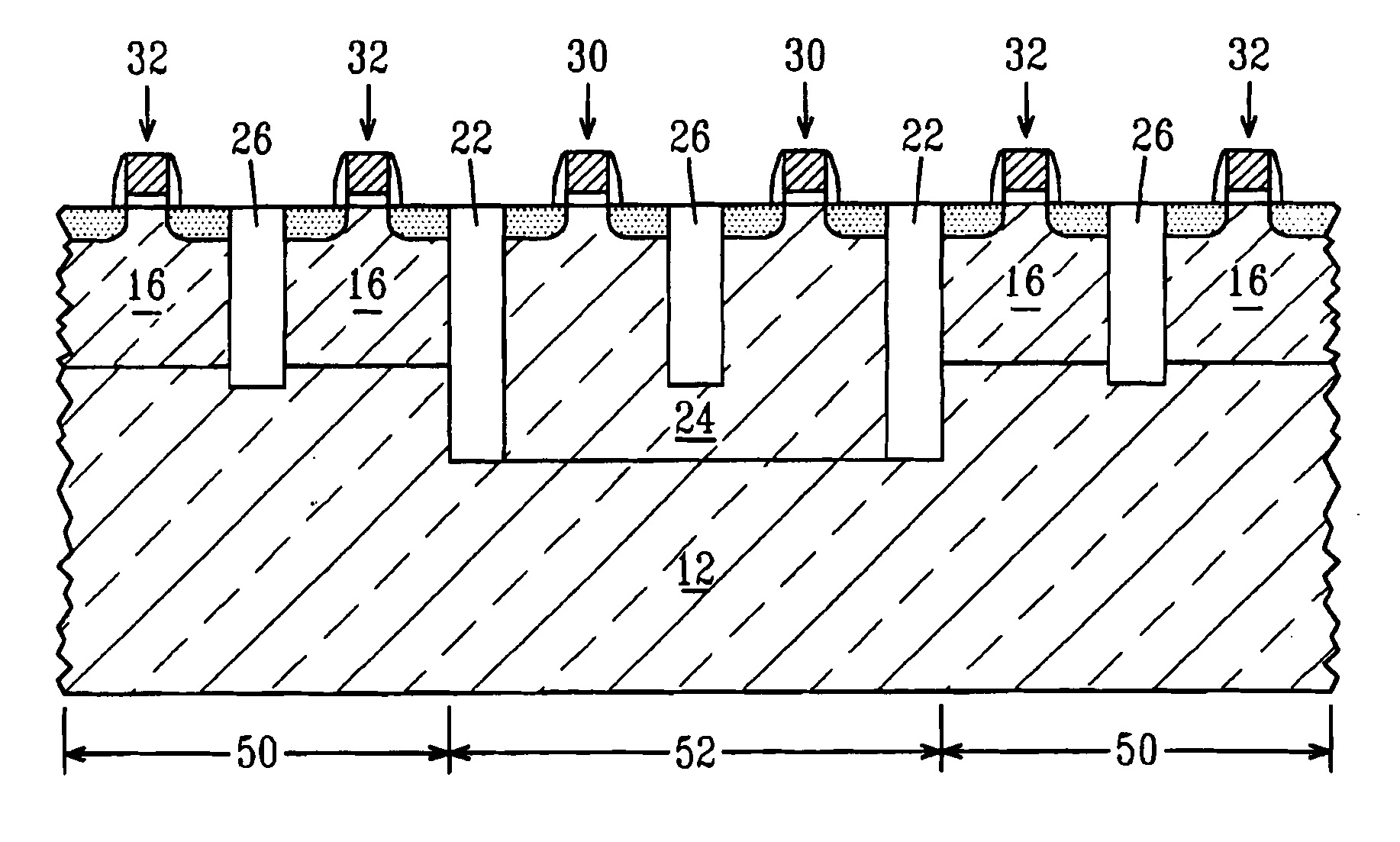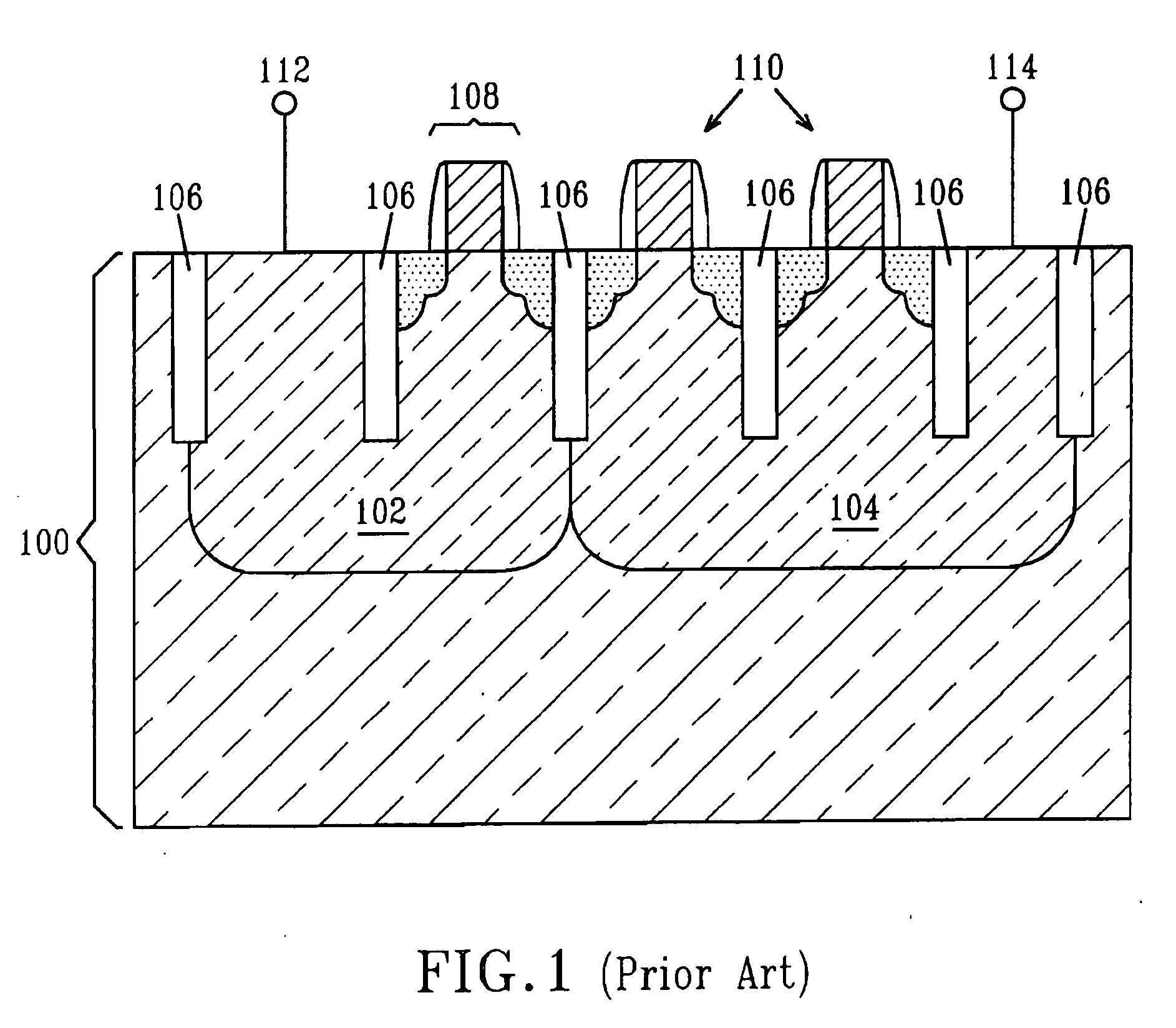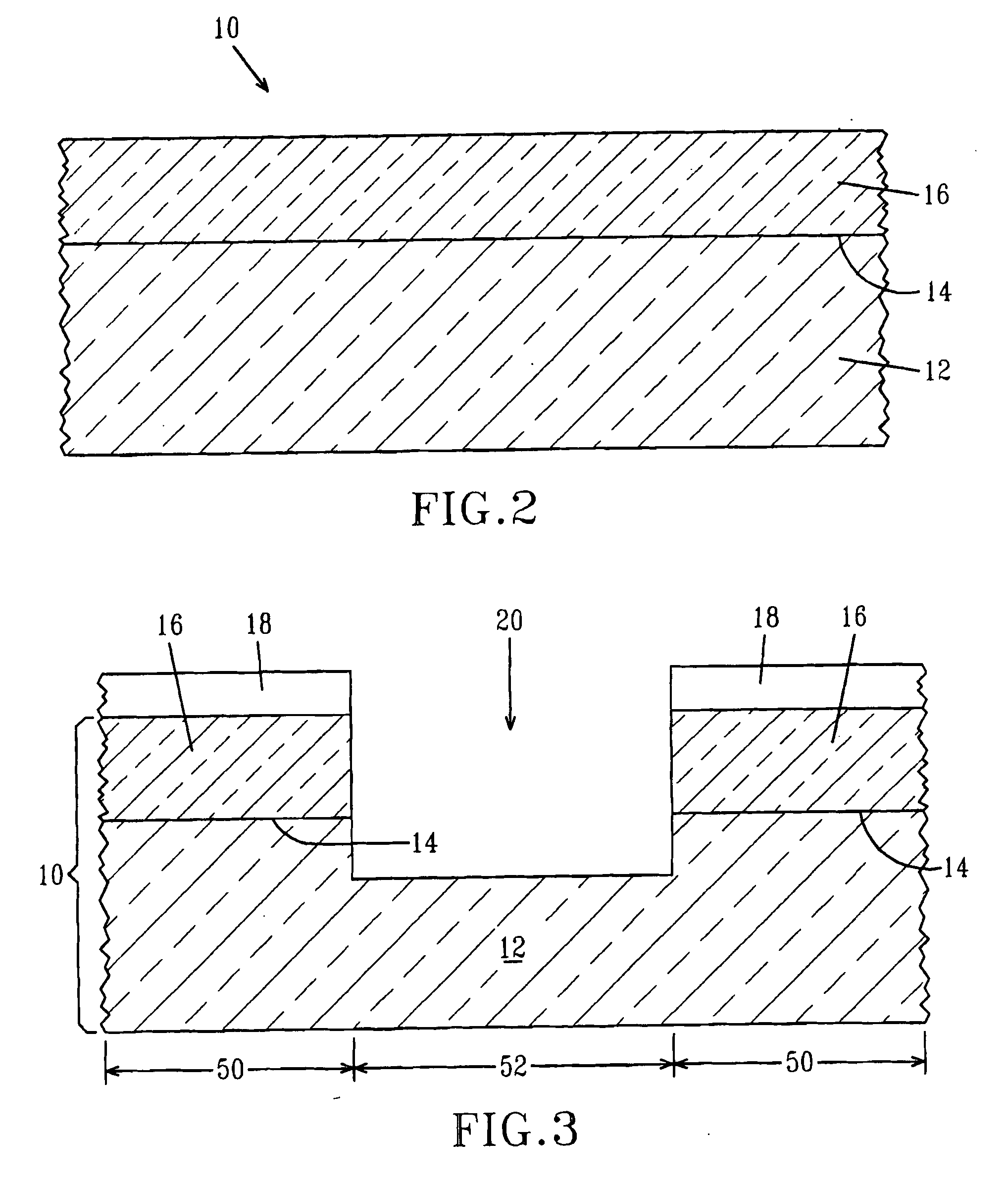Dual trench isolation for CMOS with hybrid orientations
- Summary
- Abstract
- Description
- Claims
- Application Information
AI Technical Summary
Benefits of technology
Problems solved by technology
Method used
Image
Examples
Embodiment Construction
[0032] The present invention, which relates to dual trench isolation for CMOS devices located on a hybrid oriented substrate, will now be described in greater detail by referring to the drawings that accompany the present application. It is noted that the drawings of the present invention are provided for illustrative purposes and thus they are not drawn to scale.
[0033] Reference is first made to FIG. 2 which shows an initial hybrid substrate 10 having different crystal orientations that can be employed in the present invention. Specifically, the hybrid substrate 10 includes a first (i.e., bottom) semiconductor layer 12 and a second (i.e., top) semiconductor layer 16 having a bonding interface 14 located therebetween. In accordance with the present invention, the first semiconductor layer 12 has a first crystallographic orientation and the second semiconductor layer 16 has a second crystallographic orientation which differs from that of the first crystallographic orientation.
[0034...
PUM
 Login to View More
Login to View More Abstract
Description
Claims
Application Information
 Login to View More
Login to View More - R&D
- Intellectual Property
- Life Sciences
- Materials
- Tech Scout
- Unparalleled Data Quality
- Higher Quality Content
- 60% Fewer Hallucinations
Browse by: Latest US Patents, China's latest patents, Technical Efficacy Thesaurus, Application Domain, Technology Topic, Popular Technical Reports.
© 2025 PatSnap. All rights reserved.Legal|Privacy policy|Modern Slavery Act Transparency Statement|Sitemap|About US| Contact US: help@patsnap.com



